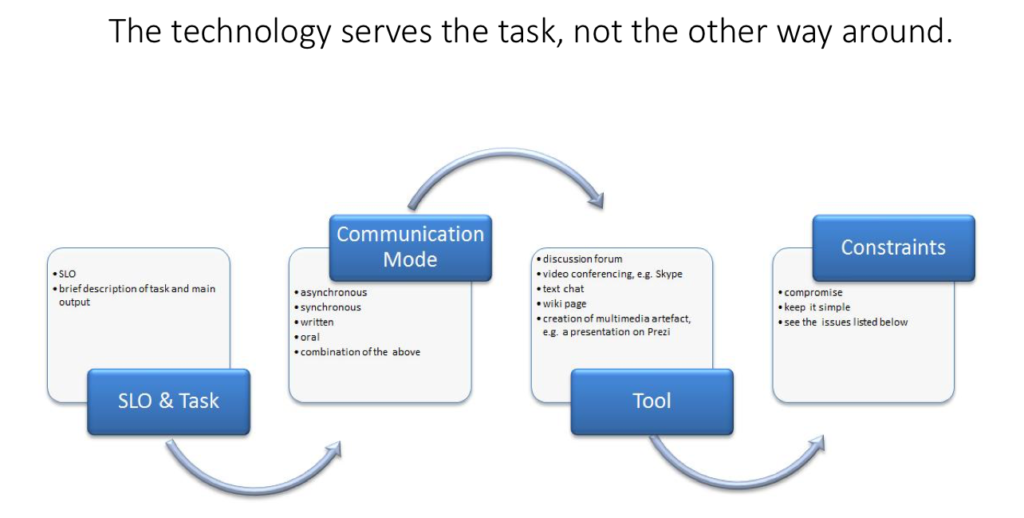Co-Laboratory Training
Learning objectives come first!
The first step in designing a virtual exchange is to decide on the learning objectives for your participants (SLO – student learning objectives) or, in other words, on what you want them to get out of the exchange. Your learning objectives constitute the “roadmap” of your course and have impact on the design of tasks, choice of technologies and communication modes.
These should be boiled down to specific achievements.
For example, for this VE training course we have identified the following objectives:
After having taking part in this training, the participants (YOU) will
- be familiar with various formats of VE and their applicability to various academic contexts
- be able to distinguish and design various types of tasks used in VE
- be able familiar with various tools and communication channels useful in VE
- be able to select adequate tools to support task completion
- be able aware of the challenges involved in VE and the solutions to them
The sequence of actions in VE design has been illustrated in this diagram:
Before you choose digital tools for your VE, it is time to have a go at making your own objectives more precise. Please consider the following:
- identify at least 3 skills, competences or content knowledge that you want your students to develop through the exchange.
- How can technology assist you in addressing these learning objectives? What type of tool(s) do you have in mind? Which functionalities (or affordances) will the students need?
Even if you have discussed your major goals earlier in the course, at this stage make them as precise as possible. The following openings should be of help:
- After having taken part in the exchange my students will be able to …..
- Their ability will be evidenced by ….


